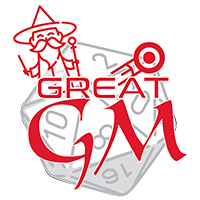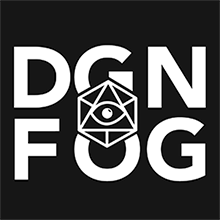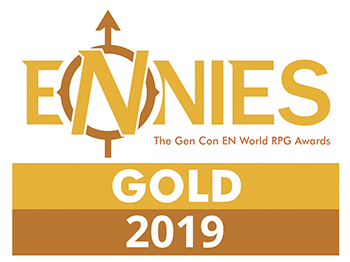Achronis
Structure
The three Houses each get one Representative per planet (except the Civil Council, they get two), and different planetary political groups will often elect different Reps, leading to conflict in policy. Major organizations such as corporations and unions also get a representative per House of government as well. The War Council tends to be the most unified, as their overall goal is "Eradicate Laran" something they've been trying and failing at for near four millennia, though their policies on internal conflicts are much more varied. The Civil Council tends to divide itself between populist parties, corporate parties, moderates, and socialists. They are much more divided than either the War or Foreign Councils, and parties tend to spring up within this House before spreading to the others, largely due to its size. The Foreign Council deals with colonization efforts, diplomacy with the Spirit Cartel and major corporations, and other small states, seeking to incorporate them into the growing and bloated republic.
The largest factions are...
- Human Front - A coalition of smaller political parties which stand for Human supremacy. They are small and radical but are notable enough to be mentioned here, largely due to some surprising political moves, and possible affiliations with Human Supremacist Terrorist organizations.
- Jia Niamumic - While not all of the corporations represented in Achronis are members of this party, most work together at least on a grand scale, to reduce regulations and make a profit. This party is largely dominated by Corporate Owned Sectors, or politicians who have been paid off to work for them, as well as the Corp's Representatives themself.
- Sotish Shajam - The Popular People's party is a populist group that is generally elected in the middle-class sectors of Achronis. They argue for Achroni nationalism, saying that any and all aliens incorporated into the Republic after the turn of the Mojn Oqinshus Era are naught but invaders. They are a larger more populist version of the Human Front, as they implement many effective social and welfare programs, but also target those they consider "Non-founding Xenos".
- Mis Shajam - The Worker's People's Party is a coalition of Union and Socialist Representatives who tend to argue for laborers in both rural and urban sectors. They often work with the Popular Peoples party in what is referred to as the People's Front, but disagree on Social matters, as the MS is much more inclusive and socially liberal.
- Nekon Nesumsis - The Return to Normal Party is an absolute moderate party. They aren't the most socially liberal, as they don't put in place protections for Aliens and other minority groups, but they don't strip them away either. They won't let corporations remove regulations but they won't add them either. The RtN is by far one of the most popular parties, not because anyone particularly likes them, but it's because they're near always elected after one coalition's reign turns bad and most people want a return to normal, which they can provide.
The last thing to address here is the Mowwa, known as the supreme ruler of Achronis. Every decade, the Houses all elect one of their own to serve as the head of the government, who has many roles similar to the Meta: United States President. The citizenry then votes, using the preferred choice ballot system, on who of the three becomes the head of the government for the next decade. This will shape the public policy and focus of the state, as a Mowwa elected from the War Council will send the Republic into a state of near-permanent war until they are voted out of office.
Culture
The Naishatus, who tend to be found in the more urban of Achroni planets. They are human-dominated, the culture being descended from that of the original human founders. They are by far the most common ethnicity within the Human Front, though Humans are by no means the only species which identify as such.
The Naiwinjam, an ethnicity born of the more militant aspect of ancient Dromespo. Despite Achronis' distaste towards slavery, this ethicity was born of one of the ancient Dromespo (Also known as Dramatin, Devkarin, and Drow) Houses, a group famed for their hegemony over their entire branch and junction's slave markets. They gave up the practice for more traditional mercenary and warfare work for the chance to join the growing Achroni Republic, helping the state subdue and incorporate the rest of the Dromespo states and Houses. Over time, most Dromespo have assimilated into Naiwinjam culture, with the strict regimen and adherence to war gods.
The Jisameco, an ethnicity that is by far the most diverse of the four big ones. It is where most of Achronis' inclusivity, land of opportunity, and anti-slavery messaging comes from. The Jisameco were born from an order of druids that have since died out, but whose general hippie-ness have lived on. The first Jisameco, in conjunction with the Naishatus, were the original founders of Achronis, with the Naiwinjam being incorporated a few centuries later.
Public Agenda
Assets
History
Meta; Most of what follows is documented in the Achroni History Timeline. Everything before is muddled.
The Dromespo continued to dominate the military leading the charge into the Long War and the end of the Mythric Era. In 399 AKM, The First Capital Shift occurred, leading to many of the original substrates of Achronis' successor state splitting away. The need to reconquer them led to a more defensive play in the Long War. The turn of the Saw Awanshu Era marked an increase in military action, the Dromespo, gaining even more influence and power. There were even rumours that they would attempt a coup, to return to the old Feudal system, but those were dashed when the majority of the Dromespo were killed at the Battle of Kaseibeiut. The last of their powerbases were destroyed in the Sacking of Coma Jone. The next two centuries was a long age of self-evaluation, with several large shake-ups to Achroni society, such as the Hijomu Crisis, and a brief stint of authoritarianism. Achronis came out a stronger state, with a reformed military doctrine and stronger democratic tradition.
The next near two thousand years was sent trying to reconstruct the Naiwinjam, and pressing Laran back. The course of the war changed so much that many were optimistic it would come to an end. Unluckily for them, upon the crowning of Laran's current Impirator, the course of the war changed again. Achronis had claimed, incorporated, and assimilated many of Laran's worlds, doing their best to do away with the empire's foul culture. The turn of the era, marked in Achronis by the Pame'a Crisis, near all of the territory gained in the last two millennia was relost. Most of it went to Laran, some of it became independent. The area known today as the Armageddon Branch became a hotbed of conflict, even before the start of Laran's The Armageddon Campaign. Today, things are at a stalemate. The Naiwinjam and the @Dromespo have near completely recovered, and war is being waged at a scale never seen before.
Demography and Population
Territories
Military
Technological Level
Religion
Foreign Relations
Agriculture & Industry
Trade & Transport
Education
she sishɑjɑm, sheɲ sishɑjɑm (from the people, for the people)
Crusades
Due to Achronis seeing itself as the moral standard for the universe, whenever a large military offensive or campaign is waged it is known as a crusade. Notable examples would be the Diogenes Crusade and the Sapphic Crusade.Warlords
One of the less democratic and peaceful aspects of Laran, different warlords, who lead different warbands, can also get Representatives. This concession was made during the OJC Era to pacify many of the unhappy leftover military and keep them loyal. It hasn't in the last two millennia had enough support to be repealed and leads to a lot of corruption, with Warlords becoming extremely influential. These warlords can change a lot, and many are celebrities within Achronis, leading to culture wars whenever two clash.This proves to be a big problem, as the conflicts between two warlords make Achronis much more unstable, as unlike Laran, their government was not built to handle internal conflict. Yet, these conflicts are surprisingly frequent, with several happening at any given time.
While not an official mandate, most people will discriminate on the type of coin they accept. As a rule, people will consider a coin form where they currently live to be most valuable, the farther a coin is minted, the less it is valued. In the most extreme cases, a hundred coins from one side of the empire will equal on on the other. The only exception to this are coins minted on the capital planet of Naipenzu, which are valued at about a 2:1 rate to native coins.
A special note is that these courts tend to be biased towards Humans, Dromespo, Corajyo, and the Dawasi , the three founding species plus the founding species of the Nameless.
Timekeeping
Achronis bases its yearly cycle on that of Faenog', tracking years with both a local timer and with what is referred to as Fae Standard time. This is how most governmental schedules are tracked.Remove these ads. Join the Worldbuilders Guild









Comments